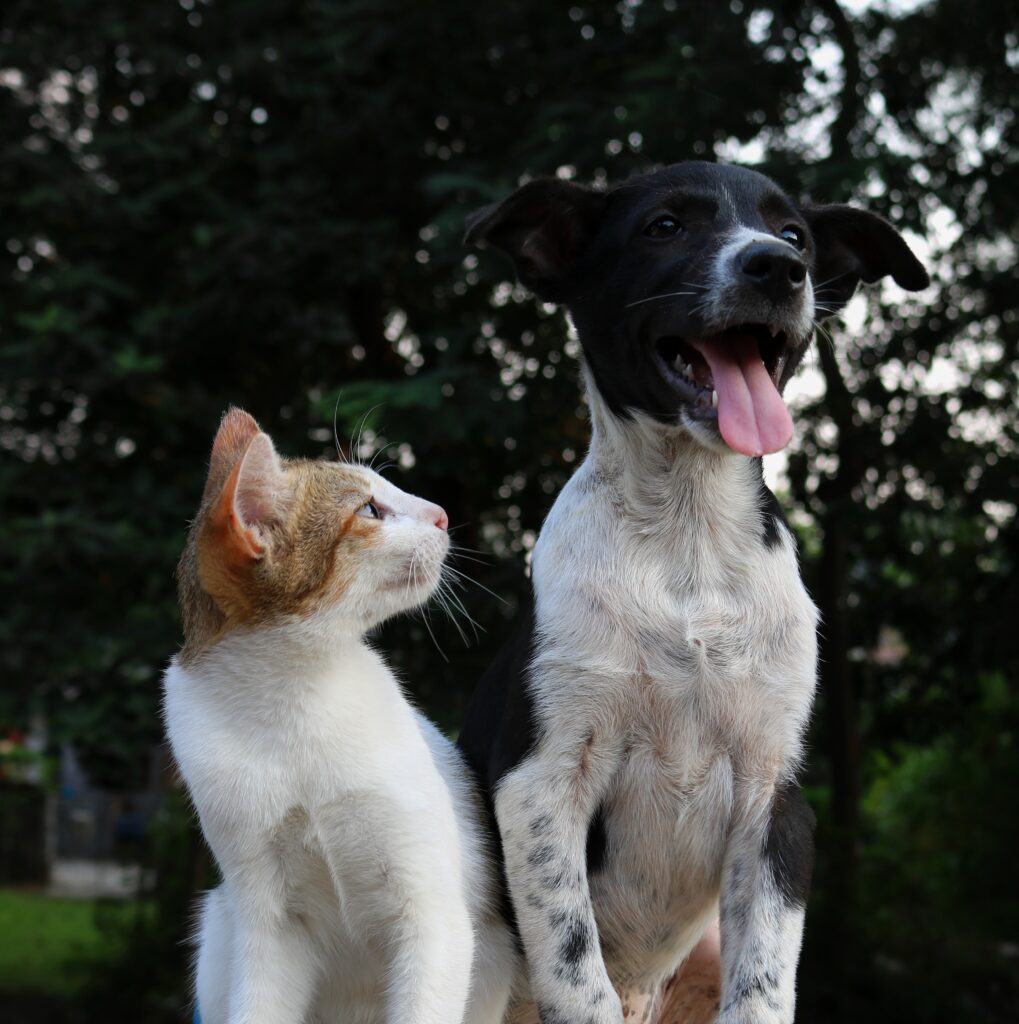Imagine this scenario: You and your beloved furry friend are enjoying a weekend getaway at a pet-friendly hotel. Everything seems perfect until disaster strikes – your mischievous pet has accidentally knocked over a valuable vase, causing it to shatter into countless pieces. Panic sets in as you wonder how the hotel will handle such a pet-related mishap. In this article, we will explore the various ways in which pet-friendly places handle pet-related disputes or damages, providing you with peace of mind when embarking on your next pet-friendly adventure.
Pet-related Disputes or Damages
As much as we love our furry friends, it’s inevitable that there may be occasional disputes or damages related to pets. Whether it’s a noise complaint, damage to property, or even an injury caused by a pet, it’s important for pet friendly places to have a system in place to address these issues. In this article, we will explore the common types of pet-related disputes or damages, the preventive measures taken by pet friendly places, the special policies and rules for pet owners, the process of handling pet-related disputes or damages, and various other aspects related to resolving these issues.
Common types of pet-related disputes or damages
-
Noise complaints: One of the most common types of disputes is noise complaints. Barking dogs, loud meowing, or even excessive squawking can disrupt the peace and quiet of a community, leading to tensions among neighbors.
-
Damage to property: Pets, especially when left unattended, can sometimes cause damage to property. Whether it’s a chewed-up carpet, scratched furniture, or accidental spills, these damages can be quite frustrating for both the pet owners and the property owners.
-
Injury or harm to other pets or people: Pets can sometimes display aggressive behavior towards other pets or even people. This can result in injuries or harm to both the victim and the aggressor, requiring immediate attention and resolution.
-
Aggressive behavior of pets: Whether it’s due to fear, insecurity, or previous experiences, some pets may exhibit aggressive behavior towards others. This can create an unsafe environment for both the pet and those around them.
-
Violation of community rules: Many pet friendly places have specific rules and regulations in place to ensure the well-being and safety of all residents. Violations of these rules, such as not picking up after pets or allowing them in restricted areas, can give rise to disputes and conflicts.

Preventive measures taken by pet friendly places
Pet friendly places are well-aware of the potential disputes and damages that can arise due to pets. To mitigate and prevent such issues, they implement various preventive measures, including:
-
Pet screening and registration process: Pet friendly places often require pet owners to go through a screening and registration process before allowing them to bring their pets. This helps ensure that responsible pet owners are admitted, reducing the risks of potential disputes.
-
Clear guidelines and expectations for pet owners: Providing clear guidelines and expectations to pet owners is crucial in preventing disputes. Pet friendly places often have detailed rules and regulations that pet owners must adhere to, including leash requirements, noise restrictions, and waste management guidelines.
-
Pet education and training programs: To promote responsible pet ownership, pet friendly places may offer education and training programs for pet owners. These programs help owners understand their responsibilities, encourage proper behavior, and address potential issues before they escalate.
-
Proper waste management facilities: Pet friendly places understand the importance of proper waste management. They provide convenient waste disposal facilities, such as designated pet waste stations or bags, to encourage pet owners to clean up after their pets.
-
Regular inspections for pet compliance: Pet friendly places often conduct regular inspections to ensure that pet owners are adhering to the rules and regulations. These inspections help identify any potential issues early on, allowing for timely intervention and resolution.
Special policies and rules for pet owners
Pet friendly places have specific policies and rules in place for pet owners to maintain a harmonious environment. Some of these policies and rules include:
-
Leash and restraint requirements: Many pet friendly places require pets to be on a leash or properly restrained at all times when outside of their designated areas. This helps prevent any uncontrolled or potentially dangerous situations.
-
Designated pet-friendly areas: Pet friendly places often have designated areas where pets are allowed to roam freely and socialize with other pets. These areas are carefully maintained and monitored to ensure the safety and well-being of all pets.
-
Prohibited pet breeds or species: Due to safety concerns or community regulations, certain pet breeds or species may be prohibited in pet friendly places. These restrictions help maintain a secure environment for all residents and their pets.
-
Pet behavior and noise guidelines: To minimize disturbances and conflicts, pet friendly places may have strict guidelines on pet behavior and noise. Pet owners are expected to ensure that their pets are well-behaved and do not cause excessive noise that may disturb others.
-
Visitor restrictions for pets: Pet friendly places may have certain restrictions or guidelines when it comes to visitors bringing their pets. This ensures that only registered and responsible pet owners are allowed to bring their pets into the community, reducing the risks of potential disputes.

Process of handling pet-related disputes or damages
When a pet-related dispute or damage occurs, pet friendly places follow a systematic process to address and resolve the situation. This includes the following steps:
-
Complaint reporting and documentation: The first step in handling pet-related disputes is for the affected party or witness to report the issue to the designated authority. The details of the dispute, including the date, time, location, and parties involved, are documented for further investigation.
-
Investigation and evidence collection: Once a complaint is filed, the designated authority will initiate an investigation into the matter. This may involve gathering statements from witnesses, collecting evidence (such as photographs or videos), and evaluating any related documentation.
-
Communication with all involved parties: To ensure a fair and transparent process, pet friendly places maintain open lines of communication with all parties involved in the dispute. This may include the pet owner, the affected party, witnesses, and any other relevant individuals.
-
Resolution through negotiation or mediation: Pet-friendly places strive to resolve disputes through negotiation or mediation whenever possible. This involves bringing all parties together to discuss the issue and find a mutually acceptable solution. Mediators or trained professionals may be involved to facilitate the process and help the parties reach an agreement.
-
Escalation to higher authorities if necessary: If a resolution cannot be reached through negotiation or mediation, the matter may be escalated to higher authorities within the pet friendly place or to legal channels. This is done to ensure that a fair and just resolution is achieved and to uphold the rights and responsibilities of all involved parties.
Mediation and arbitration for resolving disputes
In the process of handling pet-related disputes, mediation and arbitration are often employed as effective methods of resolution. These approaches offer several benefits, including:
-
Role of neutral third-party mediators: Mediation involves the participation of a neutral third party, known as a mediator, who facilitates discussions and negotiations between the involved parties. The mediator does not impose any decisions but helps encourage communication, reach agreements, and find common ground.
-
Benefits of mediation and arbitration: Mediation and arbitration provide a more informal and less adversarial approach to resolving disputes. They save time and money compared to traditional litigation processes and allow the parties to have more control over the outcome. Mediation also promotes better understanding and communication between parties, fostering a positive and long-lasting resolution.
-
Mediation process and principles: The mediation process typically involves an initial meeting with all involved parties, followed by separate or joint sessions to identify the issues and explore potential solutions. The principles of mediation include confidentiality, impartiality, and voluntary participation.
-
Enforcement of mediation agreements: Once an agreement is reached through mediation, it is formalized into a written document signed by all parties involved. This agreement is legally binding and enforceable, ensuring that the agreed-upon terms and conditions are upheld.

Legal consequences for pet owners
Pet owners bear legal responsibilities for their pets, and failure to comply with the laws and regulations can have legal consequences. Some of the legal aspects that pet owners should be aware of include:
-
Civil liability for damages caused by pets: Pet owners can be held accountable for any damages caused by their pets. This includes property damage, injuries to other pets or people, or any losses incurred as a result of their pet’s actions. In such cases, pet owners may be liable to compensate for the damages caused.
-
Laws and regulations governing pet ownership: Pet friendly places operate within a legal framework that governs pet ownership. These laws and regulations vary by jurisdiction and may include licensing requirements, leash laws, noise regulations, and restrictions on certain breeds or species. It is important for pet owners to familiarize themselves with these laws and comply with them to avoid legal consequences.
-
Penalties for non-compliance with pet rules: Failure to comply with pet rules and regulations can result in penalties for pet owners. These penalties may include warnings, fines, or even eviction from the pet friendly place. It is in the best interest of both pet owners and the community to adhere to the established rules and regulations.
-
Owner responsibilities for injuries caused by pets: If a pet causes injuries to another person or pet, the owner may be held legally responsible for the resulting damages. This responsibility may include medical expenses, emotional distress, or any other losses incurred as a result of the incident.
Insurance coverage for pet damages
Having appropriate insurance coverage can provide financial protection for pet owners in the event of pet-related damages. Insurance options that pet owners should consider include:
-
Pet damage coverage in homeowners insurance: Some homeowners insurance policies may cover damages caused by pets. This can include property damage, such as chewed furniture or scratched walls, resulting in reimbursement or repairs.
-
Additional pet liability insurance options: Pet owners can also consider additional pet liability insurance to protect themselves against potential legal claims arising from their pet’s actions. This type of insurance may cover injuries caused by pets, as well as damages to property or third-party liability.
-
Filing a claim for pet-related damages: In the event of pet-related damages, pet owners should promptly notify their insurance company and file a claim. This typically involves providing necessary documentation, such as photographs or estimates for repairs, to support the claim.

Collaboration with local animal control authorities
Pet friendly places often collaborate closely with local animal control authorities to ensure the safety and well-being of both pets and residents. This collaboration involves:
-
Information sharing and coordination: Pet friendly places regularly share information and coordinate with local animal control authorities regarding any pet-related issues or concerns. This helps create a proactive approach to managing potential disputes or dangerous pet situations.
-
Enforcement of pet-related laws and regulations: Pet friendly places and animal control authorities work together to enforce relevant laws and regulations pertaining to pet ownership. This ensures that pet owners are aware of their responsibilities and comply with the established rules.
-
Cooperation in resolving disputes or dangerous pet situations: In situations where disputes or potentially dangerous pet situations arise, pet friendly places and animal control authorities collaborate to find suitable resolutions. This may involve joint investigations, mediation efforts, or enforcement actions if necessary.
-
Animal control assistance in case of emergencies: In case of emergencies involving pets, local animal control authorities provide essential assistance. This can include rescuing animals in distress, addressing dangerous animal behavior, or providing necessary resources and support during critical situations.
Education and awareness programs for pet owners
Promoting education and awareness among pet owners is vital for preventing disputes and damages. Pet friendly places often implement various educational initiatives, including:
-
Regular feedback collection from residents and visitors: Pet friendly places actively seek feedback from residents and visitors to identify areas for improvement and address any concerns. This feedback helps identify common issues and allows for data-driven strategies to enhance pet policies and management.
-
Analysis of common issues and improvement strategies: By analyzing common issues and trends, pet friendly places can develop targeted strategies to address these concerns. This may involve implementing additional educational programs, enhancing enforcement measures, or improving community resources for pet owners.
-
Implementing community suggestions for better pet management: Pet friendly places value the input and suggestions from their residents and visitors. When appropriate, they incorporate these suggestions into their management practices to create a more welcoming and pet-friendly environment.
-
Continuous evaluation and enhancement of pet policies: Pet friendly places understand that pet management is an ongoing process. They continuously evaluate their pet policies, rules, and programs to ensure their effectiveness and make necessary adjustments based on changing needs and feedback from the community.
Feedback and improvement measures
To ensure the continuous improvement of pet-related dispute handling and management, pet friendly places implement various feedback and improvement measures. These measures include:
-
Regular feedback collection from residents and visitors: Pet friendly places actively seek feedback from residents and visitors to identify areas for improvement and address any concerns. This feedback can be collected through surveys, community meetings, suggestion boxes, or online platforms.
-
Analysis of common issues and improvement strategies: By analyzing common issues and trends, pet friendly places can develop targeted strategies to address these concerns. This may involve implementing additional educational programs, enhancing enforcement measures, or improving community resources for pet owners.
-
Implementing community suggestions for better pet management: Pet friendly places value the input and suggestions from their residents and visitors. When appropriate, they incorporate these suggestions into their management practices to create a more welcoming and pet-friendly environment.
-
Continuous evaluation and enhancement of pet policies: Pet friendly places understand that pet management is an ongoing process. They continuously evaluate their pet policies, rules, and programs to ensure their effectiveness and make necessary adjustments based on changing needs and feedback from the community.
With a commitment to effective dispute resolution, preventive measures, education, and collaboration with relevant authorities, pet friendly places can create a harmonious environment for pets and their owners. By addressing disputes and damages in a fair and efficient manner, everyone can enjoy the benefits of a pet-friendly community while ensuring the safety and well-being of all.


